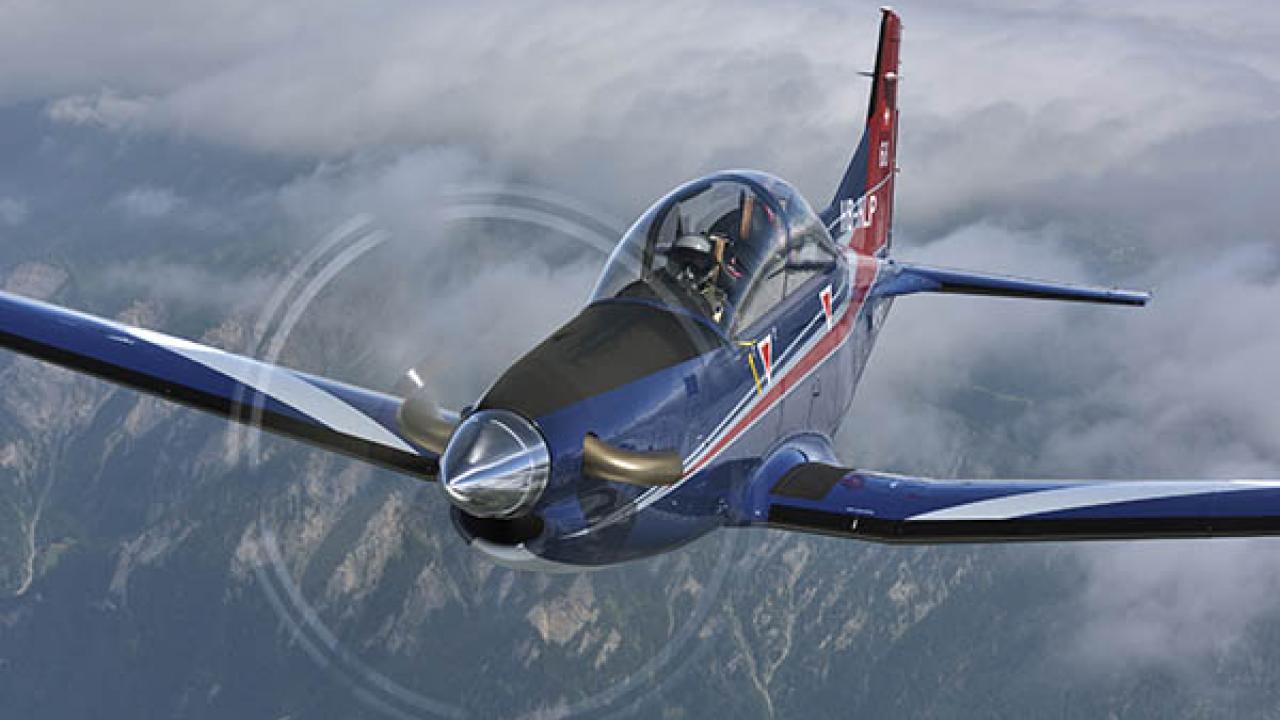TRAINING: Global firms eye Indian trainer aircraft deal

The Indian Air Force (IAF) is facing a critical shortage of basic and intermediate trainer aircraft (BTA).
“We have received adequate number of submissions from international air-framers and lessors. Now we will shortlist them in consultations with the Indian Air Force and Ministry of Defence,” a senior official at the IAF informed, without naming any company.
Though the RFI to vendors specified that preference would be given to Indian companies for the contract, global entities were also invited to participate in the bidding process.
India has only Hindustan Aeronautics Limited (HAL) that makes aircraft and the state-owned company is busy with the serial production of the indigenously designed Hindustan Turbo Trainer-40 or HTT-40 trainer aircraft.
Observers say it would be paradoxical for HAL to lease trainers to the IAF, while gearing up to supply 106 BTA, whose acquisition was approved by the Defence Acquisition Council in August 2020.
“Options are open, we will have a final call on whether to go with an Indian company or to import the aircraft once the entire process is complete,” the official added.
According to sources, the IAF is looking at trainer aircraft such as the L-39NG, built by the Czech Aero Vodochody, and there were also some suggestions of interest in the T-50TH Golden Eagle trainer/light combat jets made by Korea Aerospace Industries (KAI).
Recently, the central European aerospace company, and SkyTech, a leading provider of military aviation services and funding solutions, had signed a binding agreement for making available the L-39NG fleet for any customer either in the area of training flight hours, or short, mid and long-term leasing.
The L-39NG fleet agreement includes a set of state-of-the-art simulators and debriefing devices for effective training and learning process.
The RFI specified that the air force would need a trainer that could undertake four to six sorties a day for intensive training of pilots.
The selected company will maintain the aircraft during the duration of service and provide a simulator for pilots as well. The BTA will be used for imparting ab-initio training to pilots in IAF. The aircraft will be operated for military training purpose from an IAF base, and will be for an initial period of three to four years extendable in batches of two years.
In three to four year the indigenous HTT 40 basic trainer is expected to join service. The IAF has already issued a Request for Proposal (RFP) for 70 basic trainer jets from the state-owned aircraft maker. Earlier plans were to order additional PC 7s, but that was shelved after Pilatus got embroiled in alleged corruption charges. Currently, the Swiss company is blacklisted in India.
According to HAL, the HTT-40 is currently undergoing a string of elaborate tests to demonstrate that it is safe for rookie pilots and meets IAF’s exacting standards for trainer aircraft.
The proposal to lease aircraft to meet immediate requirements arise as the current fleet of Pilatus PC 7 basic trainer aircraft are facing serviceability issues. This is the first time that IAF has opted for leasing aircraft for training as it helps surpass long procurement process that moves at a snails pace.
The IAF is also leasing one Airbus 330 MRTT for training purpose while eyeing further lease of five more refuellers currently with France through the proper acquisition route. India has also decided to lease two Predator MQ9 drones before acquiring 30 of these armed UAVs, 10 each for three services.
“While the leasing process allows the armed forces to train on a platform that it plans to acquire, it also short-circuits the labyrinth of acquisition process like acceptance of necessity, request for information, request for proposal, defence acquisition committee, finance ministry approvals and finally the Cabinet Committee of Security,” a defence ministry official said.
The Defence Acquisition Procedure 2020 defines leasing as a ‘means to possess and operate asset without owning the asset’ and says it provides a useful way ‘to substitute huge initial capital outlays with periodical rental payments’. DAP 2020 permits leasing in two categories: Lease (Indian), the preferred category, where the lessor is an Indian entity and owns the asset; and lease (global), which refers to lease of equipment from foreign or Indian lessor.
The Indian Air Force currently operates approximately 260 trainer aircraft, which include Pilatus PC-7 Mk-II, Kiran MkI/IA, and Hawk Mk-132 advanced jet trainer, according to the Defense Ministry.
Rookie pilots in IAF go through a three-stage training involving the Pilatus PC-7 MkII aircraft, Kiran trainers and finally the Hawk advanced jet trainers before they can fly fighter jets. As the Kirans are approaching the end of their service life, some amount of Stage II training is being done on the PC-7.
The Indian Air Force is also facing an acute shortage of pilots. Recently, the government contended that the number of pilots in the Indian Air Force at present is 3,834 as against the sanctioned strength of 4,239, a shortage of 405 pilots.
According to Junior Defence Minister Shripad Naik 260 aircraft are being used for training pilots in the force.
The induction of more trainer aircraft is expected to increase the efficiency in pilot training and better operational capabilities for the IAF, he added.
The Pilatus PC-7 Mk-II, has been the backbone of basic training forIndia's Air Force the past decade but now seek interim replacement. (Image Pilatus)
Stay up to date
Subscribe to the free Times Aerospace newsletter and receive the latest content every week. We'll never share your email address.

